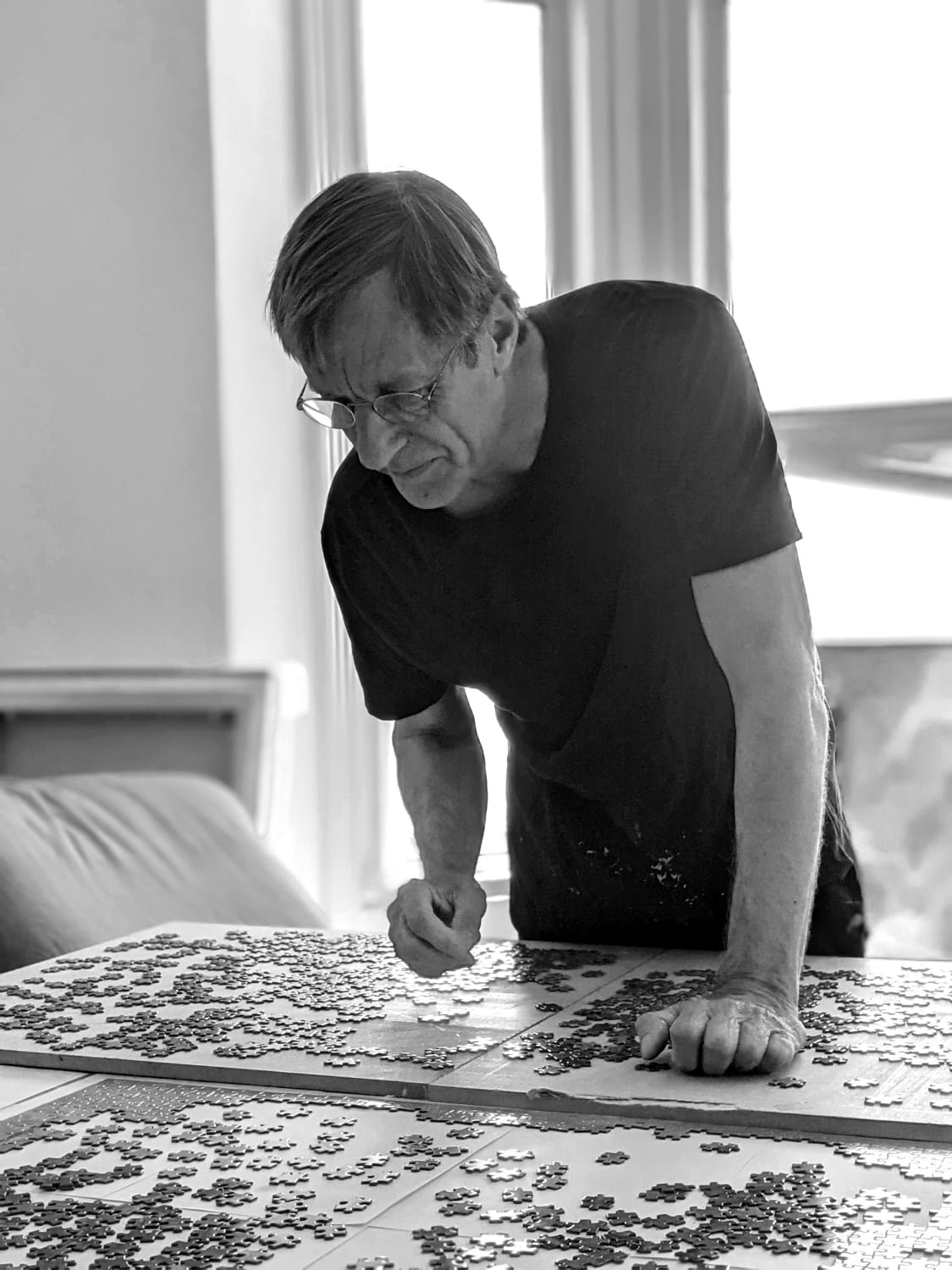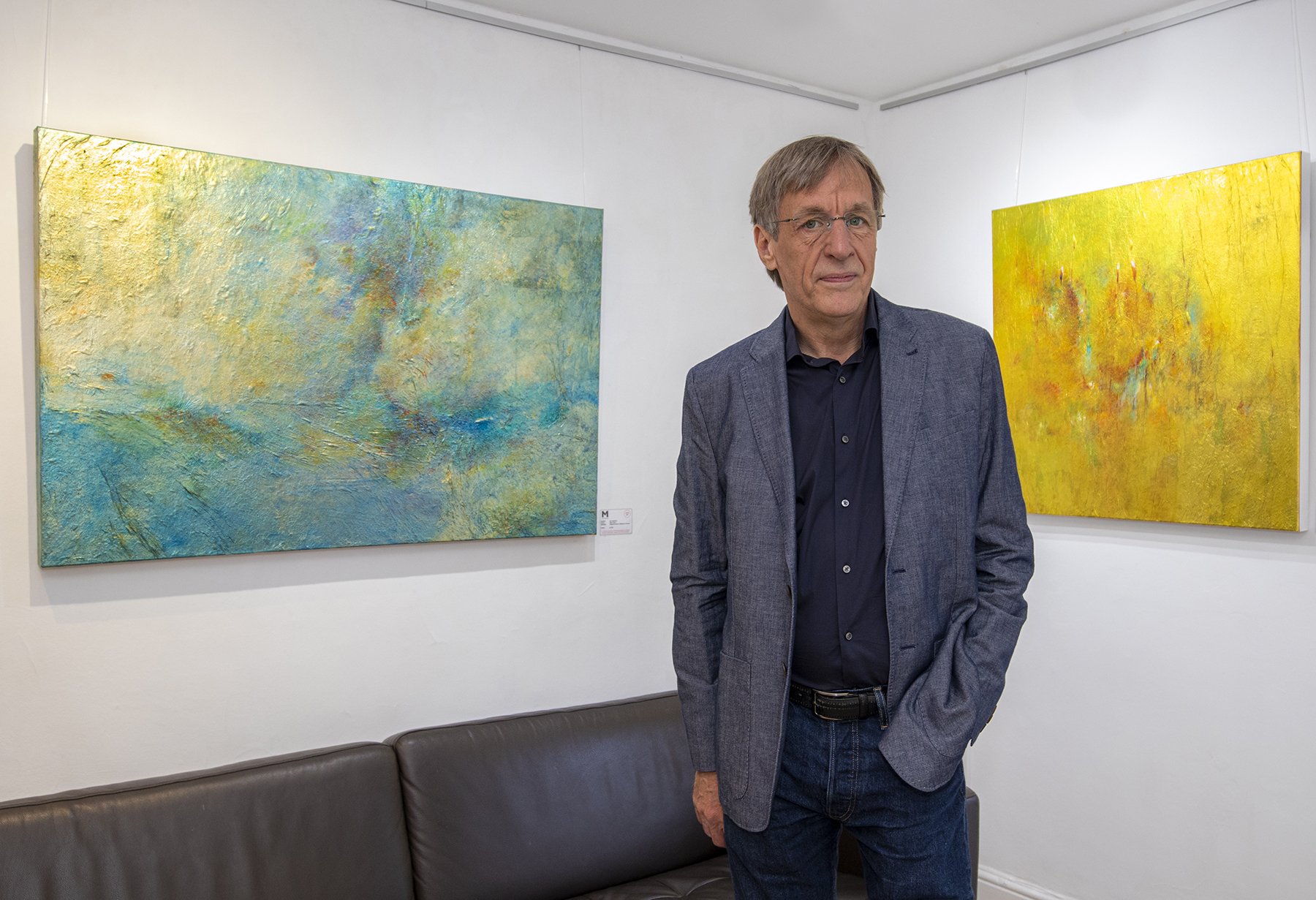Ian Lawrence
Vibrant, atmospheric and captivating, British artist Ian Lawrence is celebrated for his abstract painting style and unique story. Having recently recovered from a devastating accident Ian Lawrence decided that contrary to doctors' opinions, he would walk again. His childhood ambition of seeing his artwork in national galleries returned to him with vigour during the months of recovery in isolation and achieving this goal became his sole focus in life from that point on.
Painting to process his trauma, Ian’s love for the Arts grew as he began working within many creative fields including fine art and garden design, where he achieved a silver gilt for a garden he designed at the Royal Horticultural Society’s Hampton Court Flower Show in 2009. From 2001 – 2006 Ian held the title of ‘Artist-in-Residence’ with Southeastern, working with local schools and youth groups to broaden their appreciation for modern art. Over his five years of Residency, he also ran a series of Open Studios across the region, turning mundane empty spaces into temporary art studios. Ian’s giving attitude and art activism for the community has resulted in a permanent display of his tile installation located St. Leonards Warrior Square station.
During Ian’s early career as an artist he worked as a comic book illustrator, assisting his father Don Lawrence - creator of the 'Storm’ series. Though he saw great success as an illustrator it was the sense of freedom that came from working on large abstract canvases that truly captivated him. Rather than being led by a brief, abstraction enabled Ian Lawrence’s work to be entirely emotive.
“Since I first began painting, I have been fascinated by the discrepancy between a painted colour and the same colour in nature. The blue of the sky is no more described by a single colour than a book would be by a single word. What we see is a complication of colours that make up an area and this we describe as blue, but anyone who has ever picked up a paintbrush and daubed light blue on a canvas knows that this does not make a sky.” Drawing on his passion for nature, a Lawrence original is distinctly recognised by its bold colour and elemental feel. His work establishes a direct connection between the viewer and the natural laws that govern our world.
Ian Lawrence: On Gold
As a colour, gold is a bully. For a painter there is probably no stronger colour; it drowns out all other colours and subtlety around it becomes lost. For this reason, it is generally used in blocks, much as an accent wall is in a room. In the paintings of Gustav Klimt or early icons, a sea of gold is used as contrast to the painted areas. Where gold is used to pick out single details, they are as difficult to ignore as car headlights on a dark night. This is why so few artists use gold in paintings but then I’ve always liked a challenge.
What I wanted to do was paint with gold so that it is incorporated with the other colours; either by quietening the gold or enlivening the other colours. The gilding itself was not a challenge as I had formerly worked as a restorer but the particular problem of applying the gilding to a highly sculpted surface and preparing this to receive paint was outside of my experience. I spent a while consulting my former colleagues, paint manufacturers and conservators and the result was as follows:
First the canvas is protected around the sides. A 3D surface is then created using gesso and this is then heated for several days until thoroughly dry. I paint a picture on this surface and, while it will lack the fine detail, it will be a broad-brush version of the final image. When satisfied with this, the painting is sized and gilded. As the gilding is opaque none of the colour below will show through. For this reason, I am sparing with the gilding; not covering the whole image. I then take the canvas to my framer, Ian, who varnishes it with an archival MSA varnish. This stops the gilding from discolouring and prepares it for the final stages of painting. Once back in the studio, I lay washes over the gilding; sometimes returning it to the colour below, sometimes allowing it to shine through.











